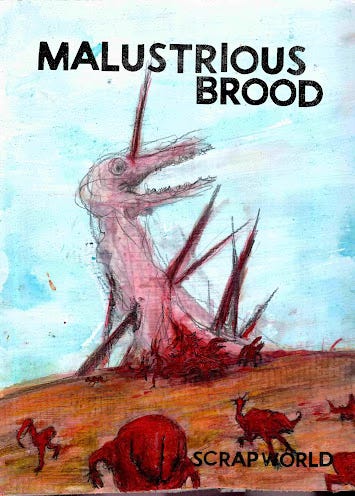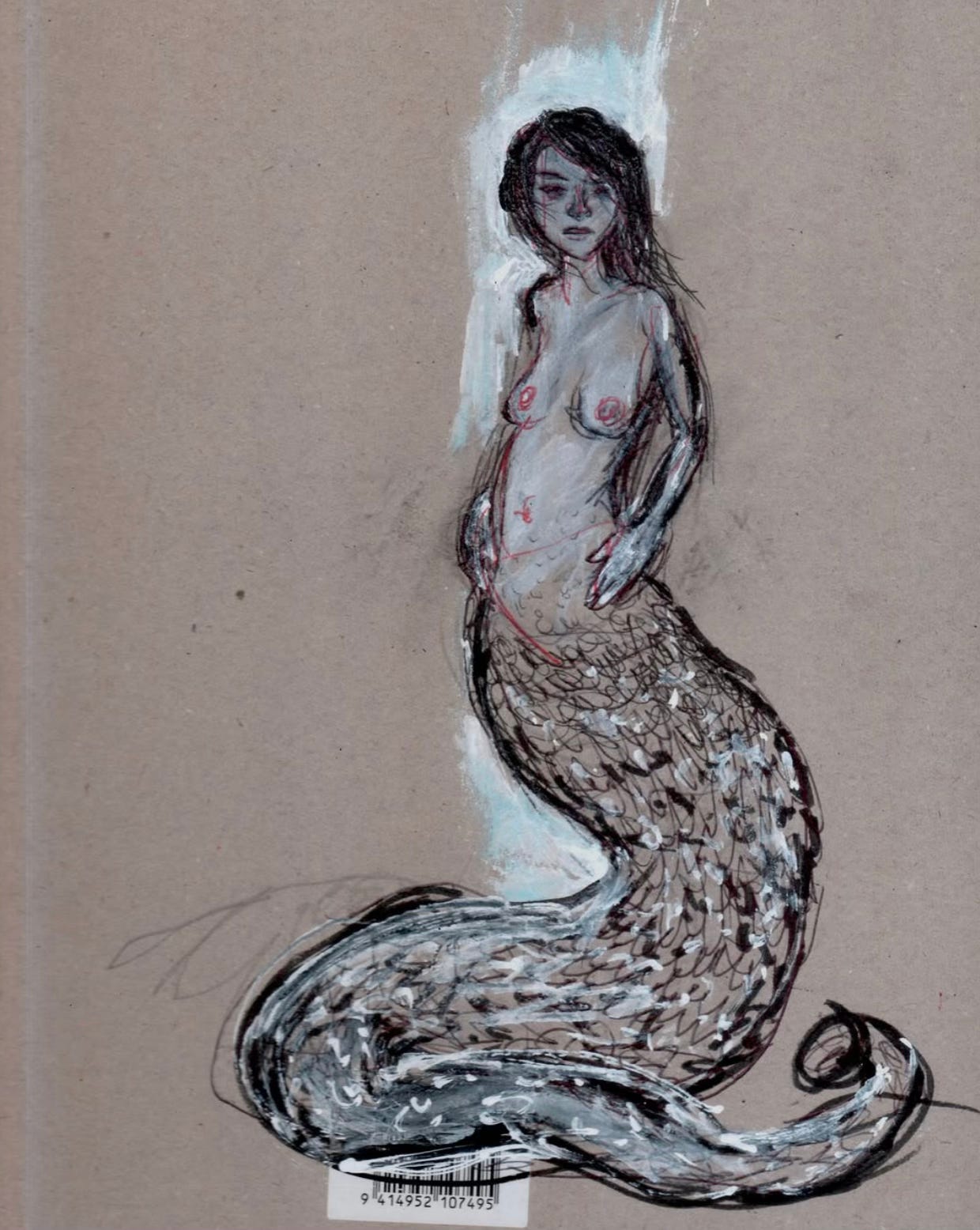Unskippable Images
Why Scrap Princess's art succeeds where everyone else fails
I just got Scrap’s new art book in the mail, Malustrious Brood, and I love it. It's about a hundred pages with art for 12 classic D&D monsters. Each take feels completely unique and wholly unskippable. The book demands you stare at it. I feel compelled to look at each piece little longer. The art punctuates and then lingers in my imagination. With every glance, I'm drawn deeper into Scrap's (toilet) world.
You may have heard about Scrap from their high-profile collaborations with Patrick Stuart over the past decade. Books like Fire on the Velvet Horizon or Deep Carbon Observatory are true RPG classics and worth your attention.
I love Scrap's art and I have for years. It's unskippable. You've got to look at it. And so many of the illustrations I see every day are the opposite of that. They are technically proficient, everything is in the right place, my brain registers I'm seeing an art and then... I skim right through. The piece does everything the way my brain expects. This is why so much generative AI work looks bad (especially as they get "better," and stop hallucinating the weird stuff that *only* an AI could create). Not only the image bad but it’s also trained and then prompted on bland, technically proficient art that all looks the same. It becomes and average of an average. Edges sanded off into oblivion. The work seems utterly knowable. And that’s a mortal sin in fantasy. Comprehension. Being able to get your hands around the thing.
This makes sense, because a lot of times the audience for an image isn’t the reader: it’s an art director. Concept Art has its place, and that place is often to communicate to other professionals about the details of a thing so that they can go make costumes, or 3D models, or props. They need to get their hands around it. But we see concept art everywhere and while these artists are really gifted, you can really miss if you mistake them for illustrations aimed at the final viewer.
I see this a lot in monsters manuals, which you could argue fill a similar void. They treat the referee as a co-worker and they are meant to communicate, quickly, all the little details about a thing. I see this in Call of Cthulhu a lot where we have perfect rendered, graphite sketches of unimaginable horrors. Well how else are you supposed to communicate that to the Keeper? Well, you can do what Scrap does and communicate the feeling of encountering these entities.
Scrap’s work isn’t like that at all. I’ve got to look. I have to interrogate it. “What is going on here?” Images are so easily digestible already, that the ability of an artist to slow you down and draw you in is key. It’s not just Scrap's forms though, which strike me. But content too. I’m interested in Scrap's take on every monster, creature, character, god, entity. Scrap's images give feeling to the inexplicable. To guttural fear. Scrap's pictures make me feel what it would be like not just to see something, but to witness it and then to be unable to forget it.
These are images etched into the walls of my mind.






I love to interrogate it.
I fixed it for you. :P
Love this take, Sean! In a way I feel like Scrap's art contributes to the ludonarrative - you could imagine that this drawing was created by a survivor, having witnessed something horrible.